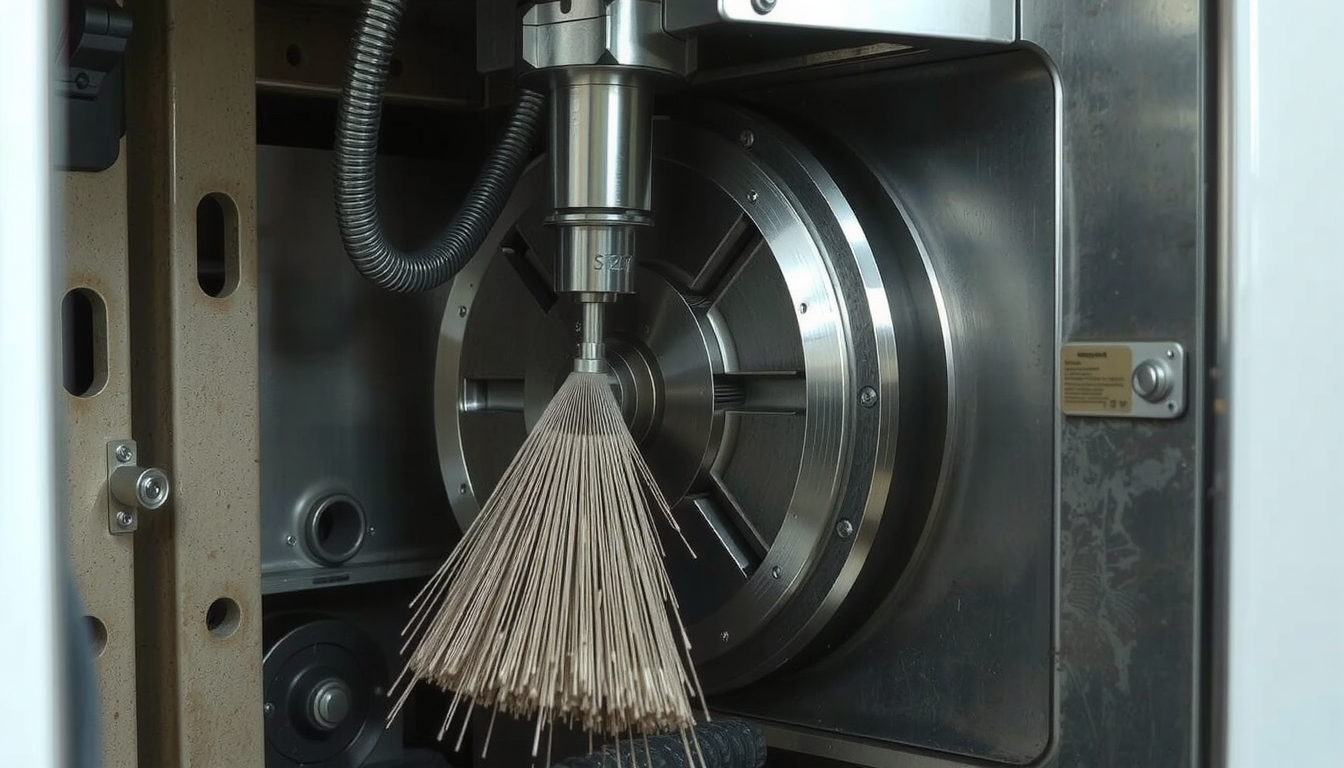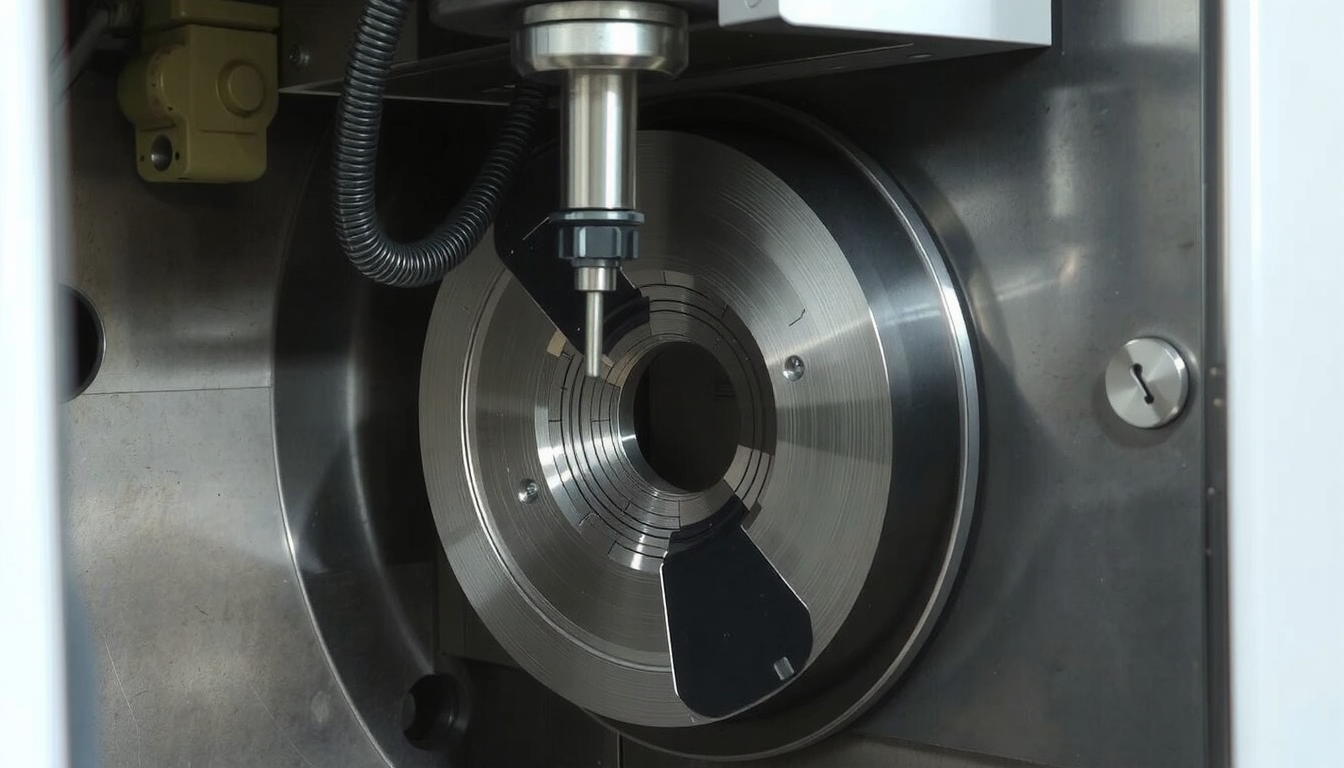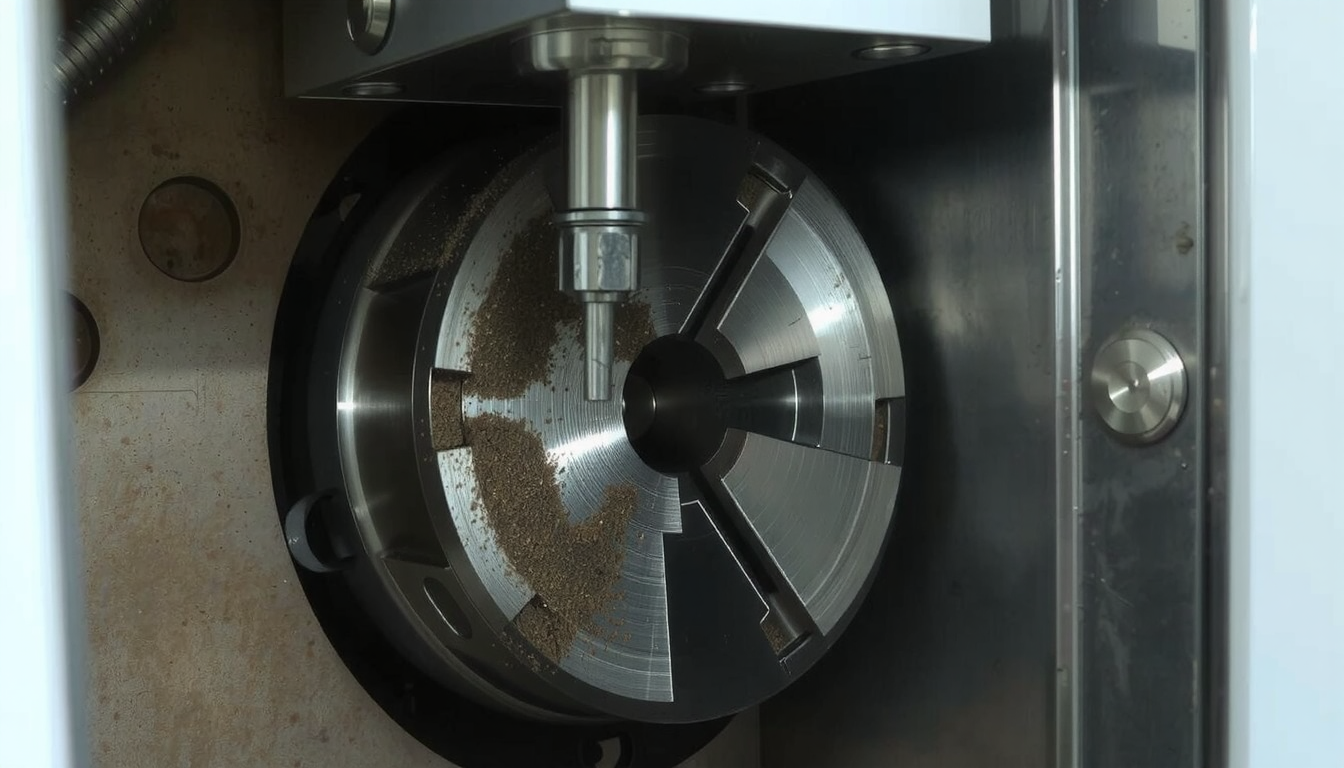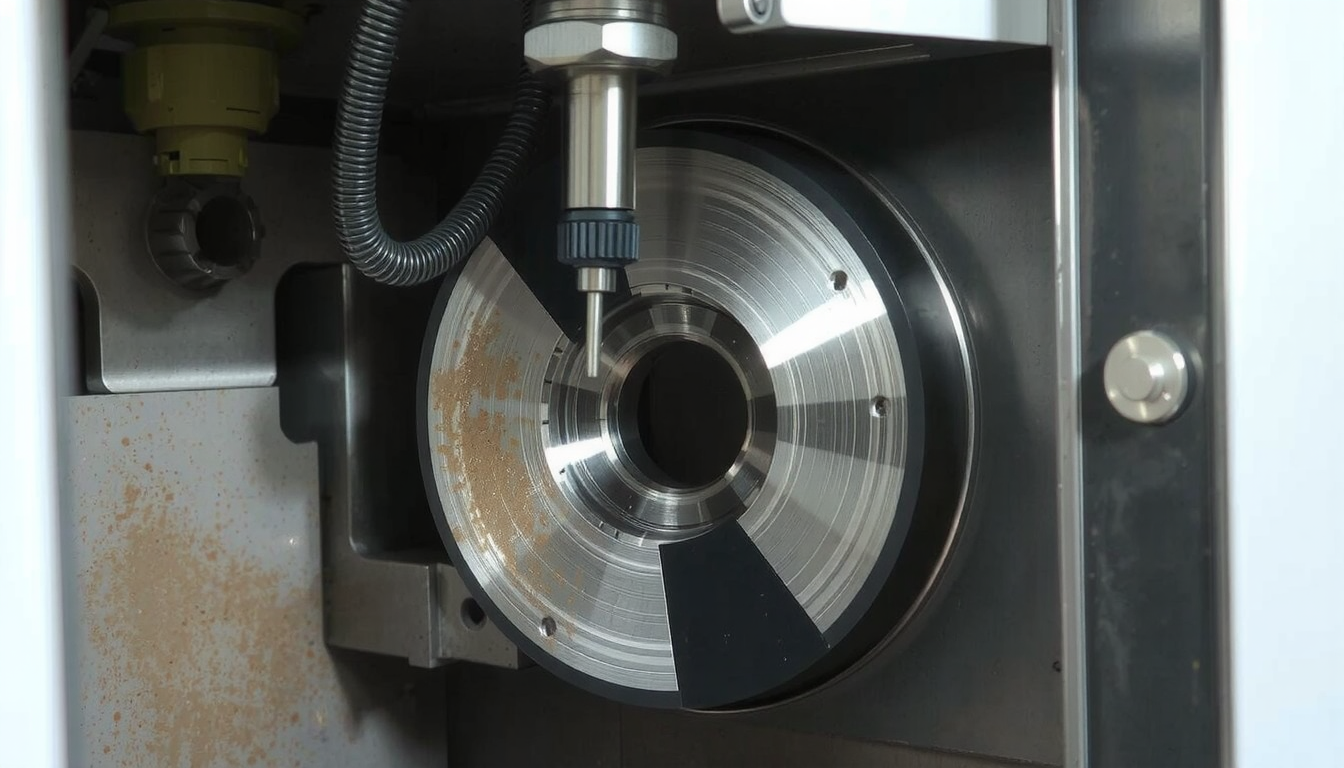Precision CNC turning is a subtractive manufacturing process, which involves removing material to create parts. It is an automated process that uses computerized tools known as lathes. These machines are capable of producing extremely accurate and complicated shapes, often circular. The precision CNC turning process is the cornerstone of production in aerospace, medical, and car industries.

This tutorial will set a clear picture of how precision CNC turning works. You will also discover its strong advantages and what makes it different from the rest of the techniques. Besides, we will give you the right service provider you should hire for your project.
Recognizing What Is Limited
This segment explains what precision CNC turning is, the general process involved, and its significance. By knowing these basics, you can better understand its potential.
Что такое токарная обработка с ЧПУ?
CNC turning or Computer Numerical Control turning entails the use of a rotating stock of material. The stock is predominantly a metal or plastic bar. A cutting tool run on the diagonal of the rotating shaft cuts away material to obtain the desired shape. Unlike CNC milling where the tool spins and the material stays still, in turning the material rotates and the tool is fixed.
The entire process begins with the importation of a digital design file. This initial file comes from CAD (Computer-Aided Design) software. The basic design is then converted by CAM (Computer-Aided Manufacturing) software. In this case, the CAM software creates the instructions called G-code. The CNC machine executes this code exactly as per the specifications.
What Makes it “Precision”?
The term “precision” not only implies being correct but also having to deal with detailed dimensions, which are called tolerances. Besides, it refers to the creation of incredibly smooth surfaces. This perfectionist approach means every part must be exactly the same every time it is manufactured.
You can also attain tight tolerances and high quality precision through the usage of this process. Tolerances are usually ±0.001 to ±0.005 inches (±0.025 to ±0.127 mm). For utmost precision, tolerances can be tightened up to ±0.0005 inches (±0.013 mm). This requires appropriate machinery and well-experienced personnel.
The Precision CNC Turning Procedure

Looking at how it’s done gives you a deeper insight into the technology involved. Here is the clear and easy breakdown of the process of finishing a product out of a digital file.
- Design & Programming: The first step includes designing a 3D CAD model of the part. This digital blueprint goes to CAM software. The software makes the G-code that will guide the lathe’s every move.
- Machine Setup: A skilled worker takes the raw material, usually a long bar. They secure it to the lathe’s holder, called a chuck. They then load all the needed cutting tools into the machine’s turret. This acts like a tool-changing robot.
- Обработка: The CNC machine’s G-code program is run. The material rotates and the tool moves. The tool then moves along the turning bar. It cuts the bar to the specific shape needed. This is a key step in the precision CNC turning procedure.
- Operations: A single part may need several different cuts. These can include rough cuts to remove large amounts of material. Finishing cuts make a smooth surface. Grooving and cutting threads for screws are also common.
- Quality Control & Finishing: After the part is cut, the next phase is to check it thoroughly. We do this using tools like calipers and highly sophisticated Coordinate Measuring Machines (CMMs). With the use of these equipment, we can be certain that every dimension is perfect. Besides, if required, the part may go through other finishing steps like polishing or coating.
The True Precision Achieved Beyond the Machine
A common perception of precision CNC turning is that the machine is entirely responsible for it. Despite the necessity of having a high-quality machine, the actual precision is the result of the whole system working in tandem. It is the control of every parameter.
Throughout our journey, we have learned that the highest level of precision is achieved through mastering these four areas:
Stability and Rigidity of the Machine
The machine itself is the very basis for precision. A high-quality CNC lathe is designed to be super heavy and mostly immovable. This construction reduces vibrations, which are problematic in cutting, and also manages the cutting heat generated. Heat will always change the dimensions of the part being cut. A sturdy machine will provide a steady platform for the cutting tool to do its job, and that is essential for accuracy.
High-Quality Tooling
The cutting tools are the parts that actually touch the material. This means they need to be in top condition. They should be very sharp, wear-resistant, and made from strong materials such as carbide. The particular shape of the tool tip also promotes effective cutting. Having the right tool geometry permits the production of a clean cut. In return, a better surface finish and accurate dimensions will be achieved. We make use of only the best quality tools.
Operator Expertise and Programming
An expert machinist plays a crucial part in the success of the process. They use their experience to improve the efficiency of the cutting program. This process includes selecting the right speeds for the rotating workpiece, as well as managing the cut, tool pressure, and temperature to prevent warping. Their efforts often result in turning good parts into perfect ones.

Строгий контроль качества
You cannot assure precision without measuring it. Quality control is not just an end-of-the-line task. It is a process that takes place over the entire production line. Our vigilance during the production process helps us catch any issues early. Final verification with calibrated measuring tools ensures that everything manufactured is exactly according to the design specifications. This is the kind of quality dedication that sets a benchmark for the precision turning industry.
Applications & Standard Geometries
Precision CNC turning is a flexible process that is used for a variety of parts. It is particularly suitable for components with a cylindrical or symmetrical shape.
What Parts Can Be Made?
This method is especially good for components that need to be round and have a proper fit. Some of them are:
- Shafts & Axles: Used in cars, motors, and all types of machinery.
- Bushings & Bearings: Ensure smooth, low-friction movement between parts.
- Pins & Dowels: Used for aligning and holding components together.
- Housings & Enclosures: Commonly for round medical and electronic devices.
- Fittings & Connectors: For systems that transport fluids or air, like hydraulics.
Typical Turning Operations
To make these components, a CNC lathe performs a series of specific cuts, including:
- Facing: Making a flat surface at the end of the part.
- Tapering: Cutting a conical shape.
- Knurling: Creating a grip pattern on a surface.
- Threading: Cutting threads for screws or bolts.
- Скучно: Making a hole larger.
- Бурение: Creating a hole.
- Grooving: Cutting a narrow channel in the part.
Precision CNC Turning vs. CNC Milling

A common question is whether to use turning or milling. Both methods are CNC-controlled processes that remove material but are suitable for different types of parts. Therefore the difference between CNC turning and milling should be understood in order to apply the most efficient technique.
| Характеристика | Прецизионная токарная обработка с ЧПУ | Фрезерование с ЧПУ |
|---|---|---|
| Core Motion | The workpiece rotates; the tool is stationary. | The tool rotates; the workpiece is stationary. |
| Best for Geometry | Cylindrical or symmetrical parts. | Flat or blocky parts with complex features. |
| Typical Parts | Shafts, pins, knobs, fittings. | Brackets, molds, housings, plates. |
| Экономическая эффективность | Faster and cheaper for round parts. | More versatile for complex, non-round shapes. |
Selecting the Right Precision Turning Solution
The choice of the right manufacturing partner is as significant as the choice of the right process. Consider the following when you need a precision turning solution.
Standard Turning Vs. Swiss CNC Turning
The most common way of making turned parts is to use standard CNC lathes. They can be used for numerous functions. But for some detail parts, a dedicated machine is a better choice.
Swiss-style CNC turning is unique because the material moves through a guide bushing. This offers more support much closer to the cutting tool. This support is perfect for making very long, thin parts that might bend on a standard lathe. For extremely small and intricate components, a specialized process like Токарные работы с ЧПУ в Швейцарии is often the superior choice.
Checklist for Partner Selection for Precision CNC Turning
When you seek a vendor, use this checklist to be sure that they meet your needs.
- ✅ Technical Capabilities: Do they have multi-axis machines with enough capacity to make your part? A check of their equipment list is crucial.
- ✅ Сертификаты качества: Are they ISO 9001 certified? This shows a strong quality management system.
- ✅ Experience & Portfolio: Request to see examples of similar parts they have made for other clients.
- ✅ Material Expertise: Have they already worked with the material you select? Different metals and plastics require a different skillset.
- ✅ Communication & Support: Are they easy to work with? A trustworthy partner replies speedily and comes up with ideas that improve your design.
While scouting for potential partners, it is advisable to look for a well-detailed and clear Токарные работы с ЧПУ page that gives a breakdown of their equipment and capabilities. After all, the aim is to create a strong relationship with an experienced manufacturing partner who can act as a part of your team.
Frequently Asked Questions (FAQ)
Here are answers to some common inquiries regarding precision CNC turning.
Which materials are best suited for precision CNC turning?
Various alternatives are widely available. This includes metals such as Aluminum (6061, 7075), Stainless Steel, Brass, and Titanium. Also, plastics such as Delrin, PEEK, and Nylon are very usable. The best material boils down to the intended use of the part. Considerations like strength, weight, and price should be taken into account.
What are the smallest and largest possible sizes of CNC turned parts?
This is dictated by the machine at hand. Large industrial lathes can produce parts that are several feet in diameter. On the other hand, Swiss-style lathes, which are masters at micro-parts, can make components with diameters of just a few millimeters. These parts are perfect for electronic devices, medical equipment, and watches.
Is precision CNC turning expensive?
For parts with a round shape, precision CNC turning is often the most cost-effective way to make them, especially in large quantities. The price is influenced by the part’s complexity, the material used, the required tolerances, and the quantity ordered. High levels of automation help in keeping labor costs down for repeat jobs.
What does “live tooling” mean in CNC turning?
Live tooling refers to cutting tools in the lathe’s turret that can spin on their own. This allows the machine to perform milling-style operations. An example might be drilling holes on the side of a part or cutting a flat surface. This means a complex part can be finished in one machine setup, which improves both time and accuracy.
Which surface finish can be obtained?
A very smooth surface finish can be obtained directly from the machine. A typical Ra value is around 16-32 microinches. This is smooth enough for many applications. In instances where a mirror-like appearance is desired, we can use secondary processes like grinding or polishing after the turning is complete.

